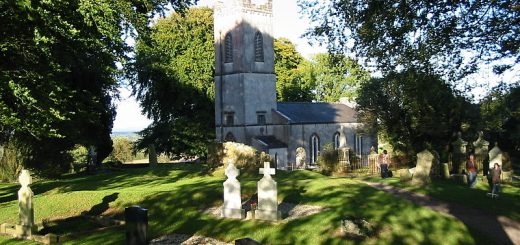Handale Priory, Scaw and the Serpent
Writing in 1888, Rev Thomas Parkinson in his ‘Yorkshire Legends and Traditions’ gives the following account of the death of the Handale Serpent. ‘In ancient times these quiet woods were infested by a huge serpent, possessed of most singular fascinating powers, which used to beguile young damsels from the paths of truth and duty, and afterwards feed on their dainty limbs. At this time there lived in these parts a brave and gallant youth named Scaw, who felt greatly incensed at the ravages which the serpent made among his fair acquaintances, and he determined to destroy the vile monster, or perish in the attempt. Therefore, amid the tears and prayers of his friends and sweethearts, he buckled on his armour, and proceeded to the serpent’s cave. Striking the rock with his sword, the reptile immediately issued from his den, breathing fire from his nostrils, and rearing high his crested head to transfix the bold intruder with his poisonous sting. Nothing daunted, the young hero fought bravely, and after a long and severe contest succeeded in killing the monster. Young Scaw forthwith married an earl’s daughter found in the cave, and, by his valour, rescued from a cruel death. By this marriage he obtained vast estates. The wood where he slew the serpent is called Scaw Wood to this day, and the stone coffin in which he was buried is yet shown near the site of the priory.’ [Rev Parkinson cited an article named ‘Serpent Legends of Yorkshire’ that appeared in ‘Leisure Hour’ May 1878, as his source of information]
St Mary’s Priory at Handale
Handale (also known as Grendale) priory was founded by William de Percy, (son of Richard de Percy) in 1133. It housed a small community of Benedictine nuns sent here from Rosedale Abbey as a penance, though four centuries later, by the time of the Dissolution of the Monasteries 1539, when the priory was closed, the ten remaining nuns were Cistercian (It had been Cistercian from at least 1504). There is very little left of Handale Priory itself. For a while the buildings were used for the manufacturing of cotton which one source suggested stopped in the late 18th and early 19th century with the lack of demand during the Napoleonic War. In 1808 it is said the remains of the west end of the chapel was still present and in 1846 the remaining buildings were demolished with the stone being used for the nearby Handle Abbey Farmhouse and Handale Abbey Walled Garden which is now Grade II listed and marks the location where the nunnery once stood.
In 1830 sixteen human skeletons were found at the priory which then linked it with Scaw and the legend of the dragon. The exact details of what was found is slightly unclear and differs depending upon the source you read. Essentially though the finds included a stone coffin, a stone pedestal of a font or cross and a sword which measured either 4′ or 5′. The skeleton with the sword was associated with Scaw. One source suggested the stone coffin lid had a sword carved on it and ‘snake slayer’.




Re: Handale Priory, Scaw and the Serpent
One version of the story named the maiden saved Scaw as Emma Beckwith.